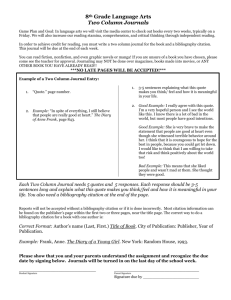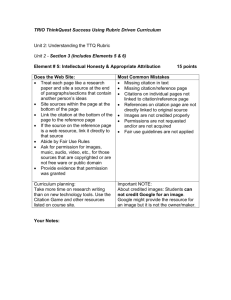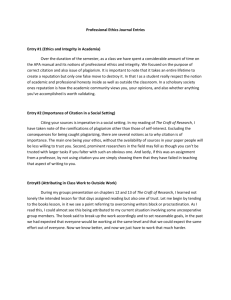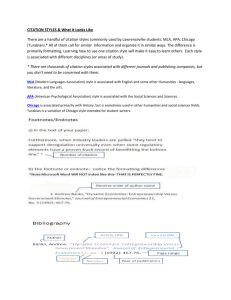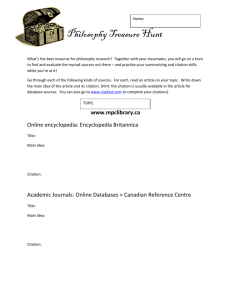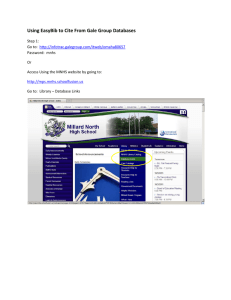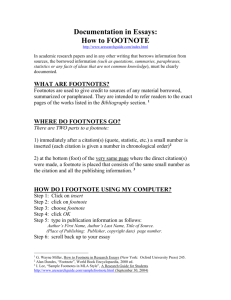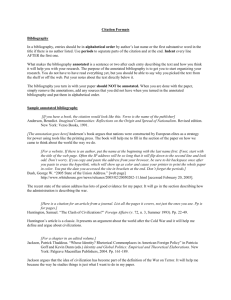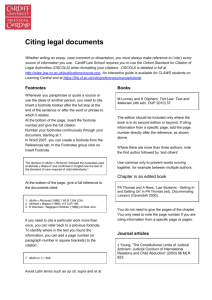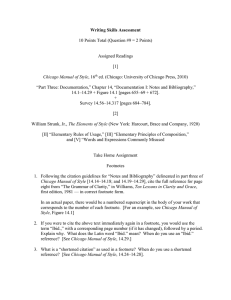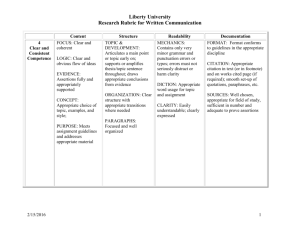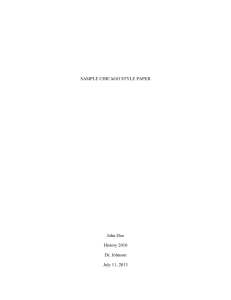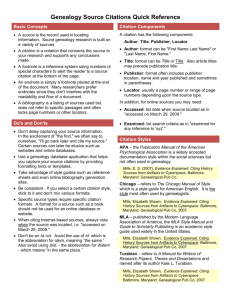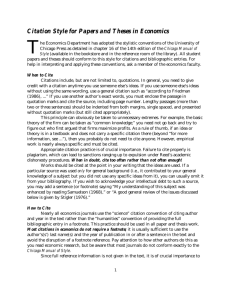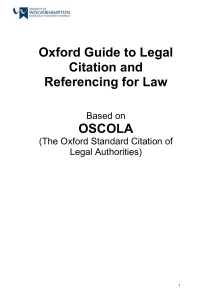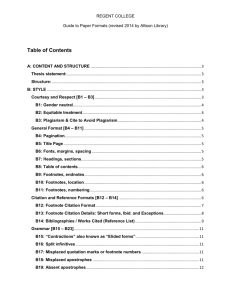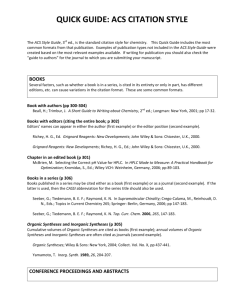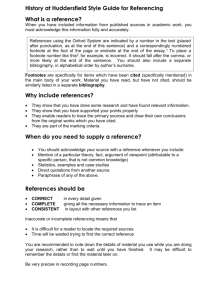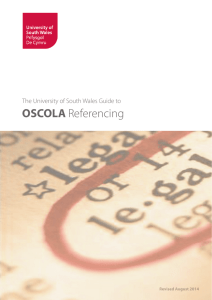paper on a toxic substance
advertisement
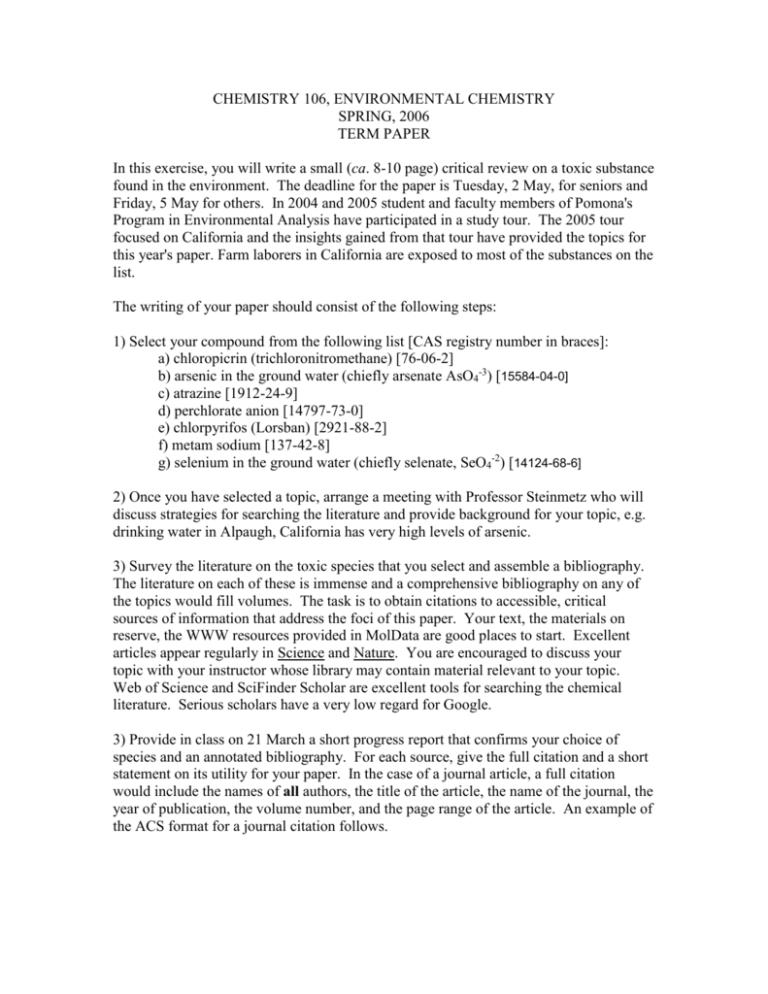
CHEMISTRY 106, ENVIRONMENTAL CHEMISTRY SPRING, 2006 TERM PAPER In this exercise, you will write a small (ca. 8-10 page) critical review on a toxic substance found in the environment. The deadline for the paper is Tuesday, 2 May, for seniors and Friday, 5 May for others. In 2004 and 2005 student and faculty members of Pomona's Program in Environmental Analysis have participated in a study tour. The 2005 tour focused on California and the insights gained from that tour have provided the topics for this year's paper. Farm laborers in California are exposed to most of the substances on the list. The writing of your paper should consist of the following steps: 1) Select your compound from the following list [CAS registry number in braces]: a) chloropicrin (trichloronitromethane) [76-06-2] b) arsenic in the ground water (chiefly arsenate AsO4-3) [15584-04-0] c) atrazine [1912-24-9] d) perchlorate anion [14797-73-0] e) chlorpyrifos (Lorsban) [2921-88-2] f) metam sodium [137-42-8] g) selenium in the ground water (chiefly selenate, SeO4-2) [14124-68-6] 2) Once you have selected a topic, arrange a meeting with Professor Steinmetz who will discuss strategies for searching the literature and provide background for your topic, e.g. drinking water in Alpaugh, California has very high levels of arsenic. 3) Survey the literature on the toxic species that you select and assemble a bibliography. The literature on each of these is immense and a comprehensive bibliography on any of the topics would fill volumes. The task is to obtain citations to accessible, critical sources of information that address the foci of this paper. Your text, the materials on reserve, the WWW resources provided in MolData are good places to start. Excellent articles appear regularly in Science and Nature. You are encouraged to discuss your topic with your instructor whose library may contain material relevant to your topic. Web of Science and SciFinder Scholar are excellent tools for searching the chemical literature. Serious scholars have a very low regard for Google. 3) Provide in class on 21 March a short progress report that confirms your choice of species and an annotated bibliography. For each source, give the full citation and a short statement on its utility for your paper. In the case of a journal article, a full citation would include the names of all authors, the title of the article, the name of the journal, the year of publication, the volume number, and the page range of the article. An example of the ACS format for a journal citation follows. Lelieveld, J.; van Aardenne, J.; Fischer, H.; de Reus, M.; Williams, J.; Winkler, P. Increasing Ozone Over the Atlantic Ocean. Science 2004, 304, 1483-1490. 4) Write your paper and give credit where credit is due. Please follow the scientific convention of citing the work of others. All citations are given at the end of the paper. Each citation is given only once. That is, avoid the use of ibid. If an article is cited more than once, use the same footnote number for each use of the reference. In the case of a book where several chapters are used, use a separate citation number for each chapter cited. You may wish to use the abbreviation et al. in the text but never in the footnote section at the end of your paper. Always give the full bibliographic citation there. In writing your paper, you may find that the instructions to authors provided by publishers such as the American Chemical Society to be instructive. The URL for the Web page of Environmental Science and Technology, the ACS journal devoted to the environment, is http://pubs.acs.org/journals/esthag/index.html. When you reach this page, click on the Authors/Reviewers ikon on the left of the screen and then select Author Guidelines from the menu. You will then gain access to a page that will enable you to download the ACS recommendations in a pdf format. Your paper should address the following issues: 1) the chemical form of the substance. Present the molecular structure(s) of the species discussed in your paper. The utilities ChemDraw and IsisDraw are useful to draw the structures of organic molecules in a form that can be inserted into a Microsoft Word file. 2) the nature of the toxicity of the material. This discussion will probably be informed by the substance's chemical structure. 3) the distribution of the material in the environment and the sources of the material, natural and anthropomorphic. Address both total amounts as well as concentrations. Concentration is important as toxicity is a function of concentration. 4) the ultimate fate of the material. Try to include estimates of residence time as well as methods for removal of the material from the environment and reduction of the sources of contamination. toxic_paper.doc, Chem 106, 16 Feb. 2005, WES
